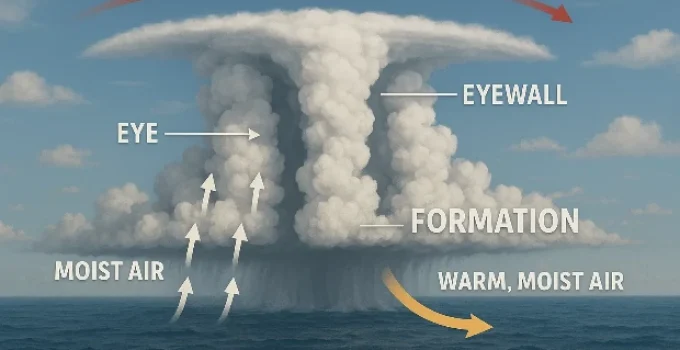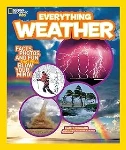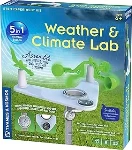What Are Hurricanes?
Hurricanes are massive, swirling storms that form over warm ocean waters and can cause powerful winds, heavy rain, and serious flooding. But how do these storms develop? What makes them so strong? And why are they called “hurricanes” in some places and different names elsewhere? This article breaks down the science behind hurricanes in a way that’s easy to understand—and packed with facts from real scientists.
🌊 Dive Deeper
- What Is a Hurricane?
- Where Do Hurricanes Form?
- How Do Hurricanes Form?
- What Happens Inside a Hurricane?
- How Do We Measure Hurricane Strength?
- Why Are Hurricanes Dangerous?
- How Do Scientists Track Hurricanes?
- 🎯 Final Thoughts
- 📚 References
What Is a Hurricane?
A hurricane is a type of tropical cyclone—a giant storm system with strong winds, heavy rain, and a spinning shape. It forms over warm tropical oceans and rotates around a center called the eye. In the Atlantic Ocean and eastern Pacific, it’s called a hurricane. In other places, it might be called a typhoon or cyclone.
🌎 | According to the National Hurricane Center, hurricanes are defined by winds of at least 74 miles per hour.
Where Do Hurricanes Form?
Hurricanes usually form in warm ocean waters near the equator, especially between June and November. These areas provide the heat and moisture hurricanes need to grow. The most active places include:
- The Atlantic Ocean, near the Caribbean and Gulf of Mexico
- The Eastern Pacific Ocean
- The Western Pacific Ocean (where they’re called typhoons)
- The Indian Ocean (where they’re called cyclones)
🌊 | Britannica reports almost 90 percent of hurricnes storms form within 20° north or south of the Equator.
How Do Hurricanes Form?
Hurricanes develop in several steps:
- Warm ocean water (at least 26.5°C or 80°F) heats the air above it.
- The warm air rises, creating low pressure at the surface.
- More air rushes in, spinning due to the Coriolis effect (caused by Earth’s rotation).
- The system grows, and if conditions are right, it becomes a tropical depression, then a tropical storm, and finally a hurricane when winds reach 74 mph.
🌀 | The National Geographic Society explains that the Coriolis effect is crucial for the storm’s rotation.
What Happens Inside a Hurricane?
Hurricanes are made up of different parts:
- The Eye: A calm, clear center.
- The Eye Wall: The most dangerous area with the strongest winds.
- Rain Bands: Curving clouds and thunderstorms that stretch out from the center.
Inside the storm, warm, moist air rises, cools, and forms clouds. This releases heat, which fuels the hurricane even more.
🌩️ | Research shows that the eye wall can produce wind speeds of over 150 mph in major hurricanes. Source
How Do We Measure Hurricane Strength?
Hurricanes are ranked using the Saffir-Simpson Hurricane Wind Scale. This scale uses wind speed to tell how strong the storm is:
| Category | Wind Speed (mph) | Damage Potential |
|---|---|---|
| 1 | 74–95 | Minimal |
| 2 | 96–110 | Moderate |
| 3 | 111–129 | Extensive |
| 4 | 130–156 | Extreme |
| 5 | 157+ | Catastrophic |
🧪 | The scale was introduced in 1971 by engineers Herbert Saffir and Robert Simpson, a former director of the National Hurricane Center. [Britannica]
Why Are Hurricanes Dangerous?
Hurricanes can cause several types of natural disasters:
- Storm Surge: Flooding caused by sea water pushed onshore.
- Heavy Rain: Which can lead to inland floods.
- Strong Winds: That knock down trees and power lines.
- Tornadoes: Sometimes spin off from hurricanes.
💧 | According to FEMA, storm surge is the leading cause of hurricane-related deaths in the U.S.
How Do Scientists Track Hurricanes?
Scientists use satellites, weather planes, radar, and computer models to track hurricanes. They watch:
- Wind speed
- Air pressure
- Storm movement
- Rainfall predictions
This helps them warn people early so they can stay safe.
🛰️ | NOAA’s Hurricane Hunter aircraft fly into storms to gather real-time data.
🎯 Final Thoughts
Hurricanes are powerful storms that form over warm ocean waters and can cause major damage. By understanding how they form and how scientists track them, we can better prepare for their impact. From spinning winds to crashing waves, hurricanes are both fascinating and serious forces of nature.
📚 References
- 💻 National Hurricane Center. “About the Saffir-Simpson Hurricane Wind Scale.” https://www.nhc.noaa.gov/aboutsshws.php
- Britannica. “Locations and Patterns of Tropical Cyclones.” https://www.britannica.com/science/tropical-cyclone/Location-and-patterns-of-tropical-cyclones.
- National Geographic Society. “The Coriolis Effect: Earth’s Rotation and Its Effect on Weather.” https://education.nationalgeographic.org/resource/coriolis-effect/4th-grade/
- Worsnop, Rochelle P., et al. “Gusts and Shear Within Hurricane Eyewalls Can Exceed Offshore Wind-Turbine Design Standards.” ArXiv, 2016, https://doi.org/10.1002/2017GL073537. Accessed 17 Jul. 2025.
- “Saffir-Simpson Hurricane Scale.” Encyclopædia Britannica, Encyclopædia Britannica, Inc., https://www.britannica.com/science/Saffir-Simpson-hurricane-scale. Accessed 17 July 2025
- Federal Emergency Management Agency (FEMA). “Hurricanes.” https://www.ready.gov/hurricanes
- National Oceanic and Atmospheric Administration (NOAA). “NOAA Hurricane Hunters.” https://www.omao.noaa.gov/aircraft-operations/noaa-hurricane-hunters
🎉 Related Products
National Geographic Kids Everything Weather: Facts, Photos, and Fun that Will Blow You Away
All you need to know about weather and all of its wildness will be found in the pages of this colorful, energetic, and accessible book.
Thames & Kosmos Weather & Climate Lab STEM Experiment Kit
5-in-1 Weather & Meteorology Station w/Wind Vane, Compass, Rain Gauge, Anemometer & Thermometer for Ages 6+, Includes Stake for Outdoor Use
📌 Learn More About Hurricanes
- How Do Hurricanes Form? ༄༄The Meteorological Recipe Behind Tropical Cyclones
- What Tools Are Used to Forecast and Measure Hurricanes?༄༄
- What’s the Difference Between a Hurricane, Typhoon, and Cyclone?༄༄༄
- Why Do Hurricanes Weaken Over Land? ༄༄The Science Behind Storm Decay
- What Causes a Hurricane to Weaken? ༄༄༄ Understanding the Forces That Slow the Storm


